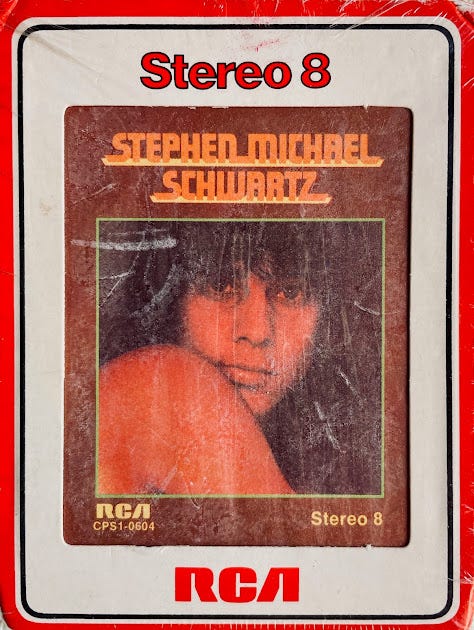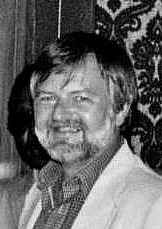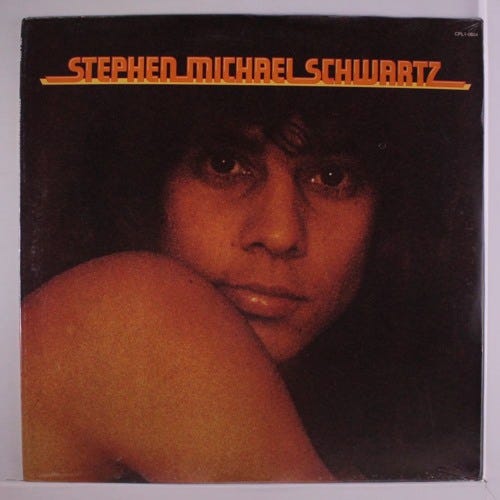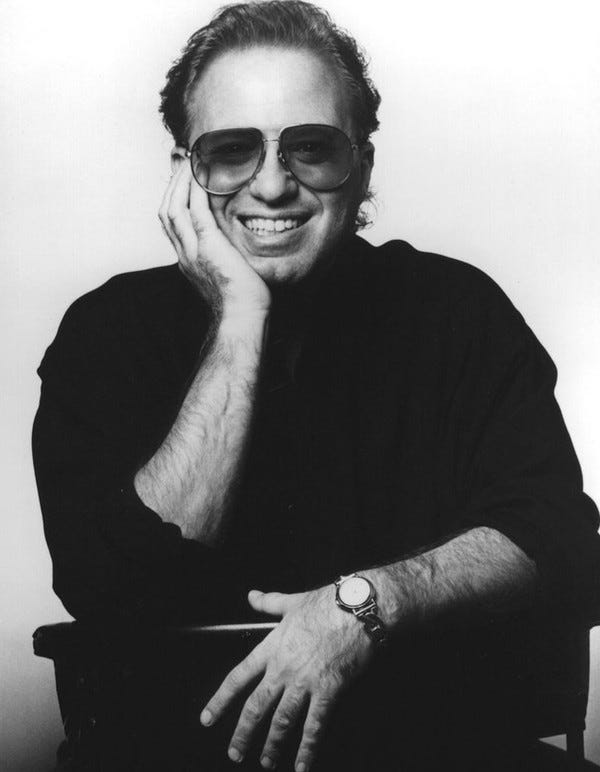Audio Autopsy, 1974: Stephen Michael Schwartz Debut RCA LP-EXCLUSIVE INTERVIEW PT. 2
Stephen takes you behind the scenes of the recording, production, and promotion of his 1974 RCA album!
To read, in his own words, Stephen’s life story to this point, which brought him to being signed as a 20-year-old to an exclusive RCA recording contract, click here for Exclusive Interview, PART 1.
Part 2:
In Part 1 of our exclusive interview with singer/songwriter/guitarist, Stephen Michael Schwartz, we found him in the studio having just signed his RCA deal, and securing a nearby apartment with his advance.
He mentioned “rubbing shoulders with some fabulous people,” and it turns out he was actually playing hoops with some fellow rockers on a daily basis! Here’s the tip-off and fast break:
“They were usually using the other studios in the RCA building on Sunset Boulevard, so it was not unusual to bump into people like John Denver, Ray Charles, Alice Cooper, Ray Davies and The Kinks, and others,” Stephen explained.
“[Producer] David [Kershenbaum] had secured the largest of the studios, Studio A [the one, capable of holding a full orchestra, where most session string dates were booked], for our recording, and even got a basketball hoop set up for me! That drew other recording artists over on breaks to come and shoot around.
“There was also a full-size ping pong table, as well. I remember Alice Cooper and me in a heated ping pong battle, while Burton Cummings of the Guess Who waited his turn to take on the winner! It was all very surreal, and at the same time perfectly normal and right.”
I had asked Stephen to take us back to the 20-year-old, with ink still drying on a worldwide recording contract, still being in contact with his high school buds. I challenged him to remember his and their reactions to all this hub-bub about “good ole goofy Steve from 3rd period chemistry lab”:
“I was never cocky about all this,” Stephen emphasized, in his customarily selfless way. “Just the opposite; I loved sharing my success with others. Bringing family and friends to the studio, even having them sing on a chorus or two where we needed it…I loved watching their excitement!
“Years later, I did reflect on my good fortunes, and wrote a song called, ‘Where Did I Go Right?’. It was less a ‘patting myself on the back,’ and more of a poetic observation of my life vs. some of my old school mates at that time.”
Stephen, singing his composition, “Where Did I Go Right?”:
Art Direction/Photography
Stephen talks about the artistic decisions around his 1974 debut album: “I was putty in the hands of the rock photographer, David Alexander, who went on to shoot such iconic album covers as Hotel California (Eagles), JT (James Taylor), Minute By Minute (The Doobie Brothers) and hundreds of classic covers we know and love.”
“If David and the marketing team at RCA had any discussions behind closed doors about wanting him to shoot me in a certain way, i.e. sexy, androgynous, teeny-bopperish, I wasn't a part of those conversations. I was just happy to have such a pro doing what he does best...making his subject look good.
“At his studio in Hollywood, I was made to feel very comfortable and relaxed. I remember him putting on my album as he shot me. He made me feel like a star.”
“As for the packaging and art work, I really liked the art director, Frank Mulvey [above], who understood my desire to have the lyrics placed in the album packaging. Not everyone wanted or got that request. It was really important to me. The hardest challenge for Frank was fitting my whole name on the cover without it looking like a 22-car pileup!
“I think he did a very good job with the orange neon-looking lettering splashed above my head”:
“As for all the photos chosen, one on the front cover, one on the back cover, and two on the inner sleeve, I don't remember how those were picked. I did love the front cover photo mostly because you couldn't tell how old I was. However, on the back cover it was much more evident I looked like a young hippie”:
“It’s interesting that, although I was very comfortable with a guitar in my hands, and always performed that way on stage, none of the photos in the album have me playing guitar! I remember bringing my beloved Martin D35 to the studio, but never opening up the case. David [Alexander] seemed more interested in close-ups as was evident in the final shots selected.”

I couldn’t help asking Stephen why all the RCA-related photos of him featured not even a hint of a smile (not to mention they’re all in black & white):
“As for smiling or not, I wasn't consciously choosing one or the other. Honestly, I was always smiling back then! I was so happy with my life and its forward movement; I guess the photos that were chosen by RCA were meant to portray a serious singer/songwriter. I was that, but I was also very happy in my life!”
I pressed him if RCA fervently “pushed” him into the teen pop idol lane, or if there might have been any consideration by the label to promote him solely as a “serious” singer/songwriter.
“Again, I really considered myself a serious singer/songwriter,” Stephen replied. “Granted, I was only 20, but I wanted to be seen in this way. Listening to the album now, with the exception of the song, ‘Love Me, Busybody,’ the subject matter had a certain depth to it.
“As a matter of fact the first single chosen off the album was, ‘Rock Me Away,’ which had an almost pop/R’n’B/gospel vibe.” (Click blue highlighted song titles to hear the audio song clips)
“That being said [about album photography], based on the look of the album cover, it made sense from a marketing standpoint that RCA might have aimed to get radio airplay by pushing the ‘teen heartthrob’ angle.”
Promotional Considerations
Rarely seen, here’s the original ad copy from the September 7, 1974 Billboard Magazine (record industry trade publication), touting that debut single release (note the brilliant, but sly-with-a-wink “What a nice Jewish boy” tone RCA used!):
“We share Stephen Michael Schwartz's mother's pride that her son, the singer, has a smash debut single ‘Rock Me Away,' which RCA predicts will make him a big success in life.
“And it's from Stephen's first album, Stephen Michael Schwartz, which BILLBOARD selected as a ‘First Time Around’ pick. The debut single by STEPHEN MICHAEL SCHWARTZ.”
“I remember being in a bunch of magazines like 16, Teen, Tiger Beat, and of course the standard music biz periodicals, Billboard, Cashbox, Record World, and perhaps a few others. I think I might have a few clippings in a box somewhere. I wasn’t really focused on saving a whole lot from that time.”

As for the customary promo items the record labels were notorious for concocting, “I don’t remember any real promo items from that time other than a press kit. I may even have one somewhere. If RCA made tee-shirts or posters, I didn’t get one. I certainly would have grabbed a few for my little sisters!
“I do remember a huge billboard on The Sunset Strip with that sexy cover all lit up announcing my debut album. I would drive my friends nonchalantly up the strip and slow down for the optimal moment they’d look up and gasp in amazement! That was fun!!”
Session Prep, Spring 1974
“There were a lot of preliminary meetings with me and David Kershenbaum along with Larry Carlton and Michael Omartian who arranged the songs. Once I played them the songs we would talk about instrumentation and style. They then knew which musicians would be right for which songs. This took a few weeks to solidify.”
The Album’s Production: Tapes Rolling on April 29, 1974
“Kershenbaum [above] was a staff producer at RCA when I met him. David had just produced an artist named BW Stevenson, who scored a top 10 hit with a song called, ‘My Maria’.” Also on RCA, that song peaked at #9 on Billboard’s Top 100 chart in the fall of 1973.
Incidentally, Stevenson co-wrote “My Maria” with Daniel Moore, who contributed backing vocals and the aforementioned “Rock Me Away” to Stephen’s album.
“I was Kershenbaum’s next artist to produce. David was a wonderful, creative guy who was very patient when it came time to sitting down with a young 20-year-old artist to map out my first album. I remember one evening sitting and playing him what were, at that time, my best songs.
“He was sensitive but pragmatic about the need for ‘hit songs.’ He asked if I was open to meeting with publishers to hear outside material in search of songs that had radio appeal as well as songs that fit my musical sensibilities.
“I was getting a first-hand lesson about how the music business worked. It had never occurred to me I would be singing other people’s songs on my record, but I agreed and we went to meet several top publishers in town.”
“Obviously it was enough to get me signed to a major record label so it was quite validating.”
“In those days you would sit in a publisher’s office, after his hearing your musical needs, and he would pitch maybe eight or ten of his best ‘radio’ songs. If you liked them, he’d give you the demo on a vinyl acetate (one-sided record) with the sheet music to take with you.”
(If the recording artists could read music, fine, but the “charts” were also given to the studio musicians hired for the sessions, the only way they’d have to learn the songs, and usually quite ably, on the spot).
“These were songs, many that had not been recorded yet, and some were not even fully-produced. You had to use your imagination. How would I sound singing this? I still have some of those acetates. They are collectors items, for sure!
“Some of the songs I was pitched were by Van Morrison (one of my favorite artists), Kenny Loggins, Neil Diamond, Jackson Browne, Severin Browne (Jackson’s brother), Ned Doheny, Don Henley and Daniel Moore.
“David thought six of my original songs were solid enough to record. So that meant four slots were available for outside material. A total of ten songs would appear on the album. We ended up cutting two more extra outside songs as backup.”
Exclusive & Previously Un-Released!
“The two songs we cut but didn’t make the album were ‘Da Doo Ron Ron,’ the classic 1963 hit by The Crystals, written by Jeff Barry, Ellie Greenwich and Phil Spector, and ‘Now That I’m Without You,’ written by the late Mentor Williams [younger brother of Award-winning singer/songwriter, Paul Williams].”
To hear an audio clip of the never-released (and, obviously, little-heard) cover by Stephen of “Da Doo Ron Ron,” click on the highlighted song title (do the same for Stephen’s just-as-rare “Now That I’m Without You”)!
“Ironically [and in yet another Cassidy family coincidence], three years later, in 1977, Shaun Cassidy, [David’s younger half-brother], scored a #1 hit with ‘Da Doo Ron Ron.’ Maybe we should have included it on my album!!!”
I wondered about Stephen’s confidence level at age 20, especially considering L.A.’s top session musicians were accompanying him in the studio:
“I was always pretty confident on stage. My songs felt solid, my voice was appealing (although I would have killed to sing like Harry Nilsson), and I liked my ‘look’ and the way I dressed. Obviously it was enough to get me signed to a major record label so it was quite validating.”
“The idea that they were there to back me up…to make me shine!!!”
“The flip side of that confidence was my entering the large recording studio at RCA with all of those incredibly talented and well established musicians. The idea that they were there to back me up…to make me shine!!! It was both a daunting and thrilling feeling every day that I came to work. I felt like a guest artist on my own album!
“David Kershenbaum was at the helm, and once again made me feel comfortable in my role as ‘artist.’ He would help me communicate with the musicians like an interpreter.
“After a while, I began feeling like I belonged there alongside [guitarist] Larry Carlton, Michael Omartian on keyboards, [drummer] Jimmy Keltner, Wilton Felder on bass, Kim Carnes (who was seven years away from her breakthrough #1 smash, ‘Bette Davis Eyes’), and the other professionals working hard on my behalf.”


“When the album, Stephen Michael Schwartz, was complete and ready to mix, a new approach to listening called ‘Quadraphonic Sound’ was becoming popular with many audiophiles.”
“It was the precursor to today’s Surround Sound. So, RCA’s engineers, [2008 Grammy winner for Best Musical Album for Children] Rick Ruggieri, and master engineer, [the late] Al Schmitt [23-time Grammy winner], mixed the album for Quad listening, which was for four speakers rather than stereo (two speakers).
“I have a copy of both formats as well as an 8-track version, and even a cassette version. My album never made it to a CD.

“The whole album experience cost $65,000. That may include all the advertising, press packets, promo material, free goods, etc.
“I don’t have solid figures on how many were sold. At one point, a few months after the release, I heard the figure of 15,000 sold, but I really have no idea. I know my parents bought 10 of them and gave them as gifts!”
Next, Exclusively in Part 3:
David Foster helps Stephen secure musicians for his first tour
Getting ready for Album #2
Selecting a new producer
Starting to record the 2nd album
Receiving a telegram from RCA, half-way through recording
Go to Part 3 by clicking here:












Great stuff, Brad!!